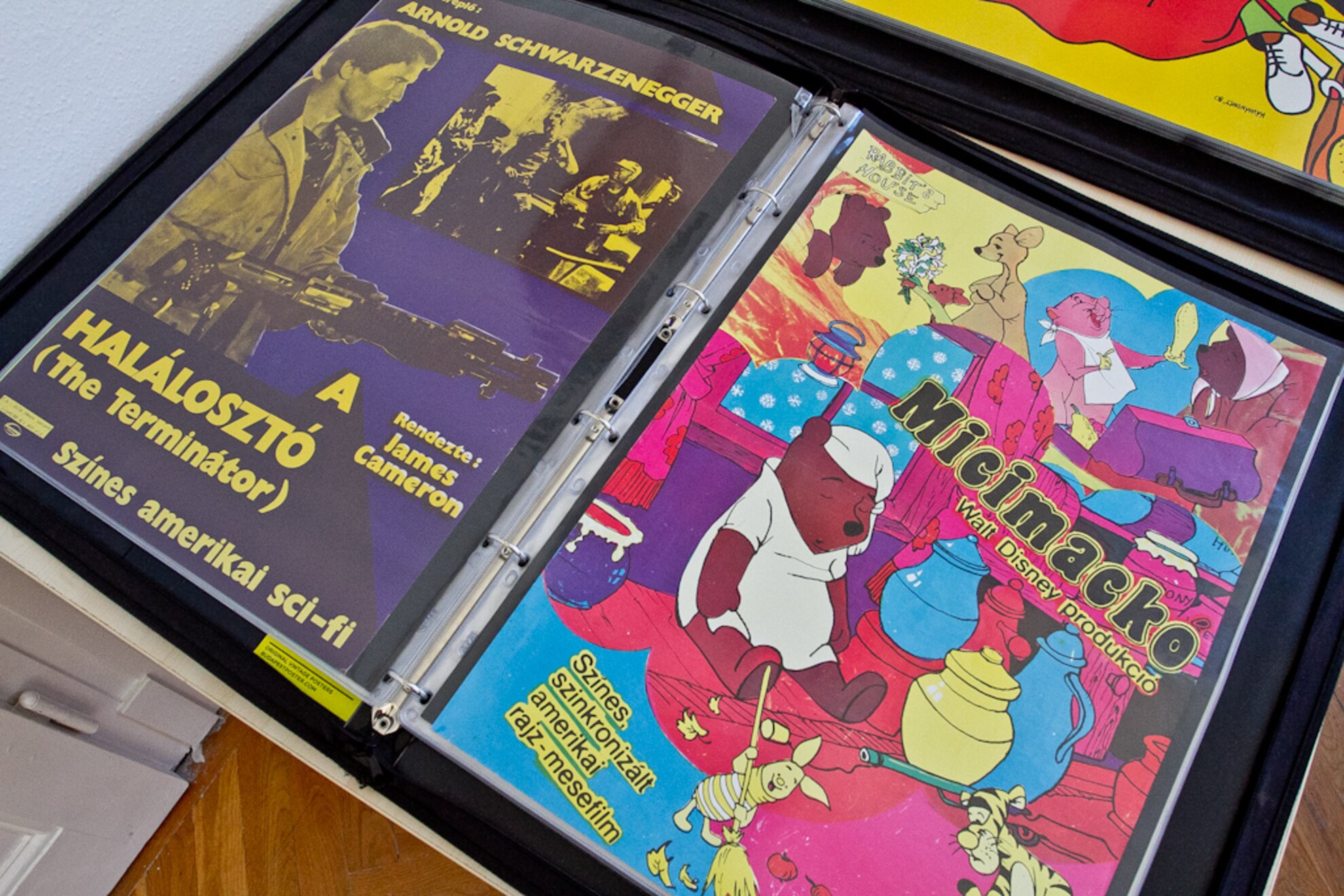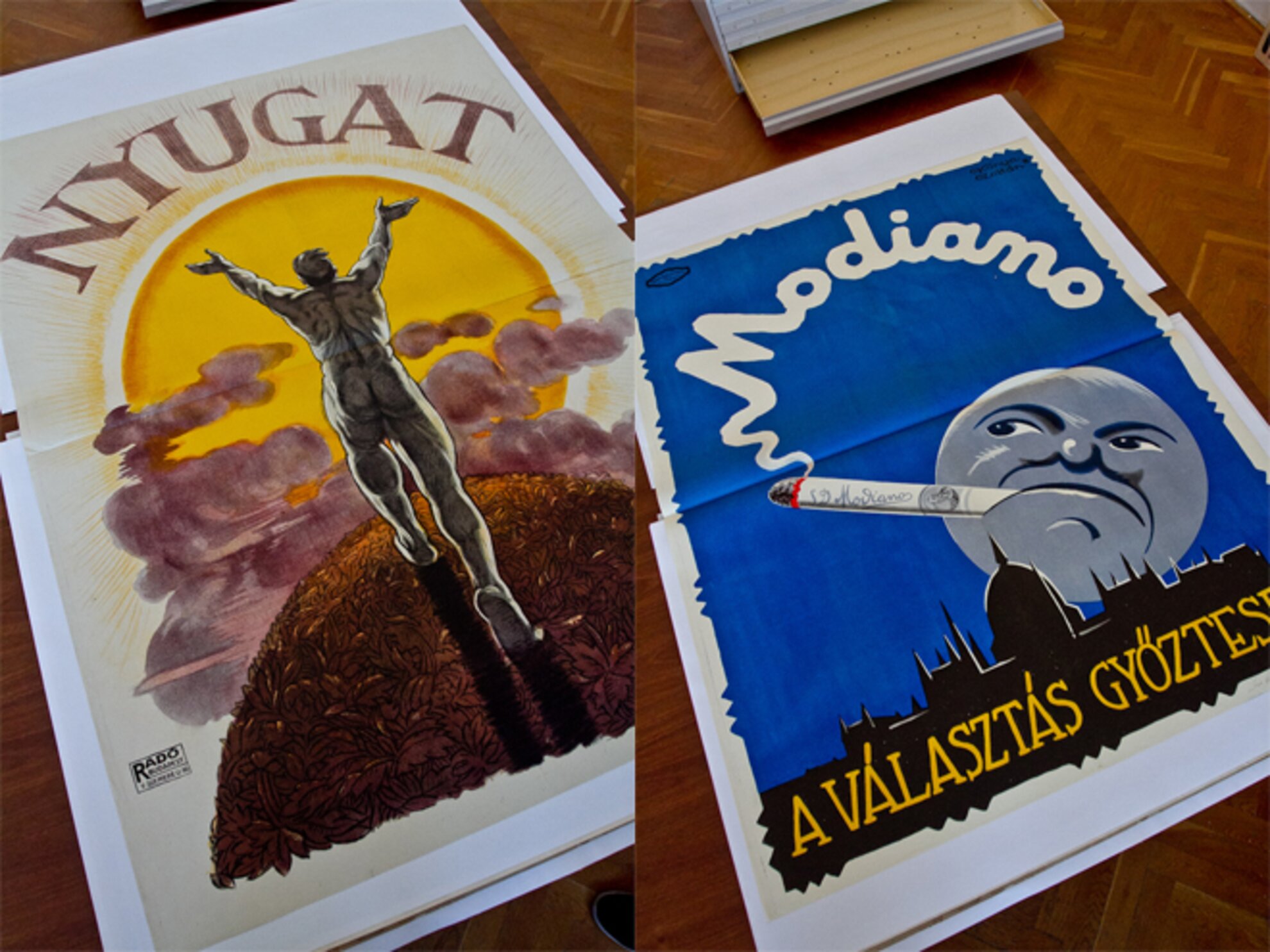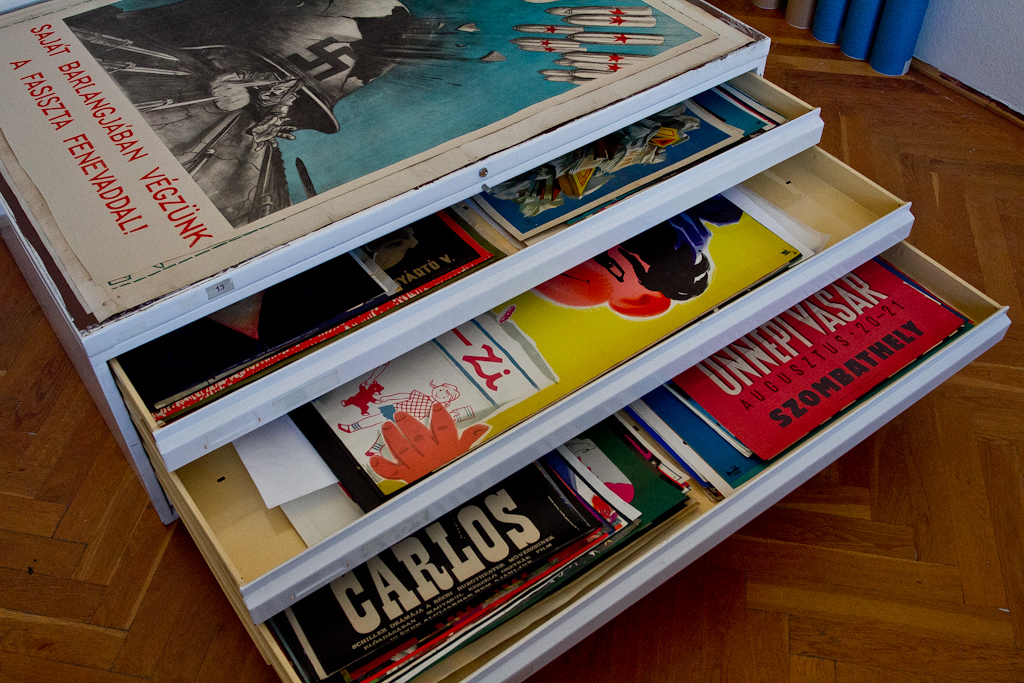Who wants to be a poster salesman?
Despite the fact that poster-master Ádám Várkonyi graduated at Corvinus University of Economics, taking a dive into the world of posters wasn't a huge detour for him, rather a love at first sight. This first sight happened at an auction, and a straight road led him to founding the former poster shop, Budapest Poster Gallery.

The gallery is housed by a huge, sunshiny loft on the 6th floor of an old apartment building in Falk Miksa Street. Entering here feels like walking through a dimensional portal leading to a peaceful parallel universe.
It's not difficult to find the most plausible reason (meaning:
posters of lost ages) for that, but the less obvious elements are right in front of us, too. Just take a deep breath of the dusty air at the reconstruction of nearby Kossuth Square, or listen to the concrete drill’s ear-pleasing orchestra.

The aesthetics of propagandaThis unique collection offers a wide array of intriguing pieces for amateur collectors, art historians, and treasure hunters. As every (understandable) piece of art (like records, comic books or poems), posters are complex entities with multiple layers of interpretation, which are capable of giving an insight to the characteristics of a certain era. It is especially true for propaganda posters originating from either world war or the period of suppressive regimes.
Mihály Bíró's influential body of work was especially significant on these matters in the early 20th century.

Speaking of Mihály Bíró, the father of political posters, also took his talents to other genres, including a poster advertising Nyugat, the legendary literary magazine that had its heydays in the first few decades of the 1900s. Another famed poster-painting maestro was Géza Faragó, who loved to live it up, and his works often depicted the typical figures of Budapest’s nightlife. Moreover, he had a tendency to include self-portraits in his posters. These century-old masterpieces will more take you on a breathtaking journey back in time with extraordinary stories and characters, giving a more complex and memorable experience than average movie posters.
The prices depend on different factors - rarity, condition, age -, but in general, they are almost as high as Sziget Festival's Budapest Eye. Considering the average Hungarian salary, it's not too shocking that the majority of clients are foreigners. Buying is not mandatory, but for art fans, a visit is highly recommended.

Budapest Poster Gallery
Address:
1055 Budapest, Falk Miksa Street 28
Opening hours:
Monday-Friday 2 PM - 6 PM
Phone:
+3630-662-7274
Facebook




